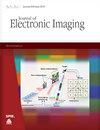基于外观流的结构先导图像着色
IF 1
4区 计算机科学
Q4 ENGINEERING, ELECTRICAL & ELECTRONIC
引用次数: 0
摘要
基于深度学习的图像内绘技术通过引入结构先验有了显著改善,但仍会产生结构失真或大面积缺失区域的纹理模糊。这主要是因为系列网络具有固有的缺点:采用不合理的结构先验势必会导致级联内绘框架第二阶段出现严重错误。为了解决这个问题,我们提出了一种基于外观流的结构先验(AFSP)引导的图像内绘方法。在第一阶段,结构生成器将边缘保留的平滑图像视为图像的全局结构,然后外观流对输入中的小尺度特征进行扭曲,并流向损坏区域。在第二阶段,利用上下文注意设计纹理生成器,在获得合理的结构先验后生成图像的高频细节。与最先进的方法相比,所提出的 AFSP 取得了视觉上更逼真的结果。在最具挑战性的 Places2 数据集(包含 365 个复杂场景的 180 万张高分辨率图像)上的对比显示,AFSP 比 EdgeConnect 的平均峰值信噪比高出 1.1731 dB。本文章由计算机程序翻译,如有差异,请以英文原文为准。
Appearance flow based structure prior guided image inpainting
Image inpainting techniques based on deep learning have shown significant improvements by introducing structure priors, but still generate structure distortion or textures fuzzy for large missing areas. This is mainly because series networks have inherent disadvantages: employing unreasonable structural priors will inevitably lead to severe mistakes in the second stage of cascade inpainting framework. To address this issue, an appearance flow-based structure prior (AFSP) guided image inpainting is proposed. In the first stage, a structure generator regards edge-preserved smooth images as global structures of images and then appearance flow warps small-scale features in input and flows to corrupted regions. In the second stage, a texture generator using contextual attention is designed to yield image high-frequency details after obtaining reasonable structure priors. Compared with state-of-the-art approaches, the proposed AFSP achieved visually more realistic results. Compared on the Places2 dataset, the most challenging with 1.8 million high-resolution images of 365 complex scenes, shows that AFSP was 1.1731 dB higher than the average peak signal-to-noise ratio for EdgeConnect.
求助全文
通过发布文献求助,成功后即可免费获取论文全文。
去求助
来源期刊

Journal of Electronic Imaging
工程技术-成像科学与照相技术
CiteScore
1.70
自引率
27.30%
发文量
341
审稿时长
4.0 months
期刊介绍:
The Journal of Electronic Imaging publishes peer-reviewed papers in all technology areas that make up the field of electronic imaging and are normally considered in the design, engineering, and applications of electronic imaging systems.
 求助内容:
求助内容: 应助结果提醒方式:
应助结果提醒方式:


